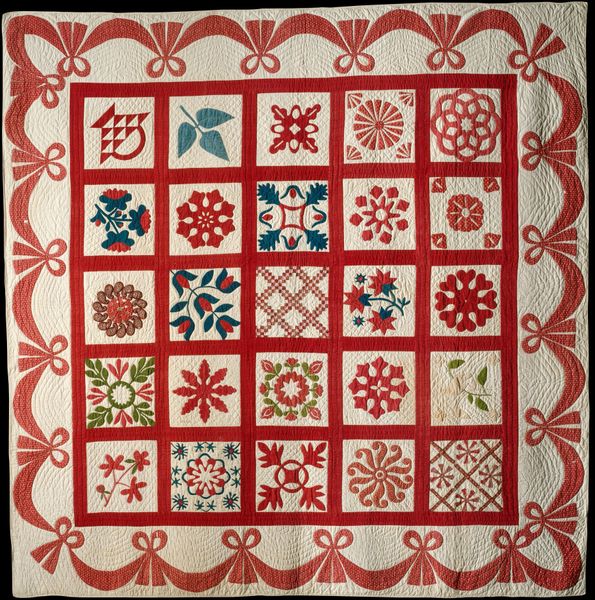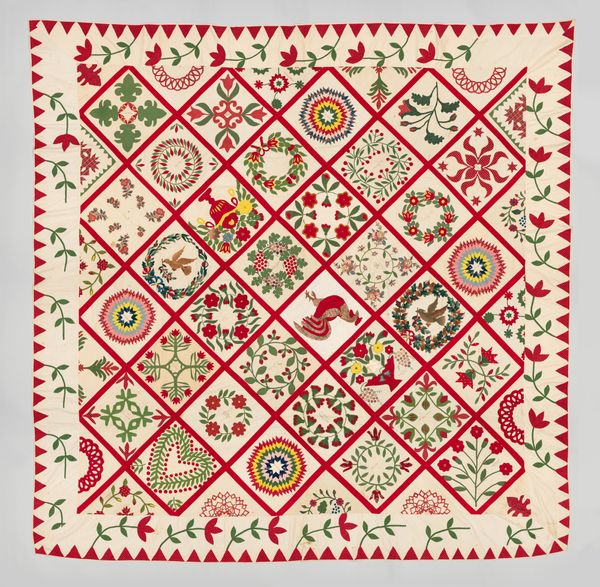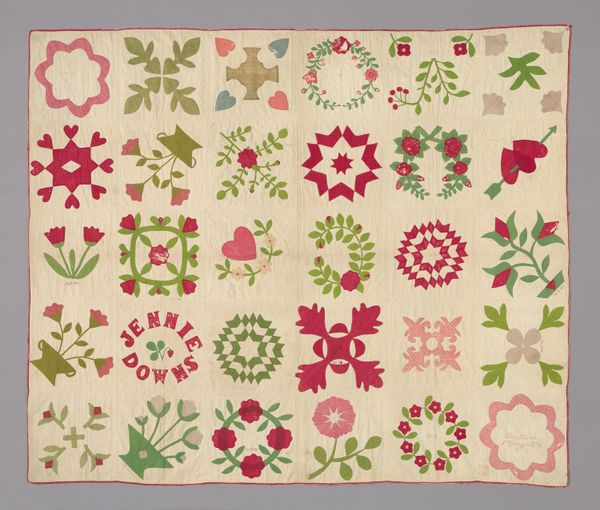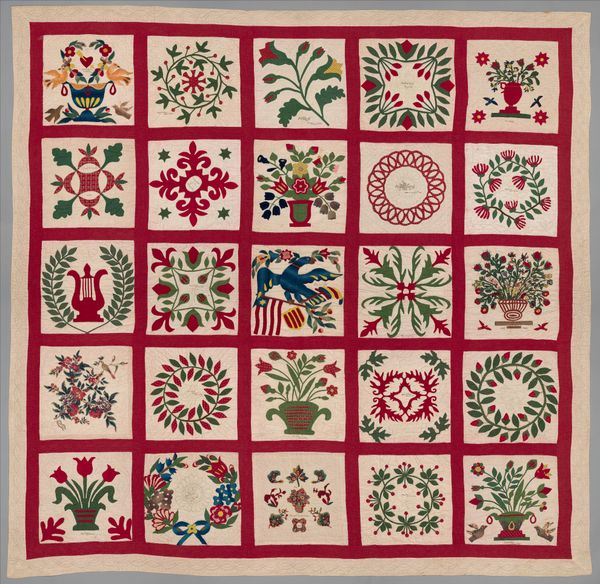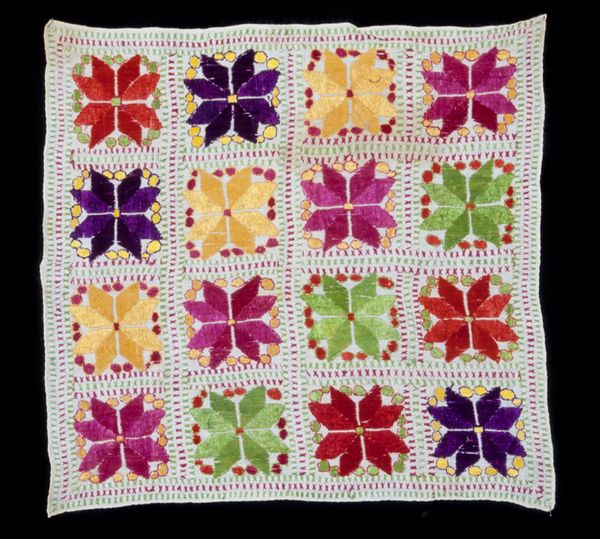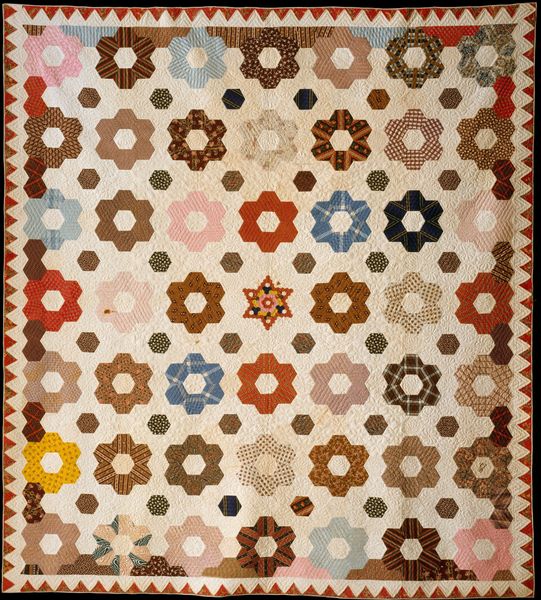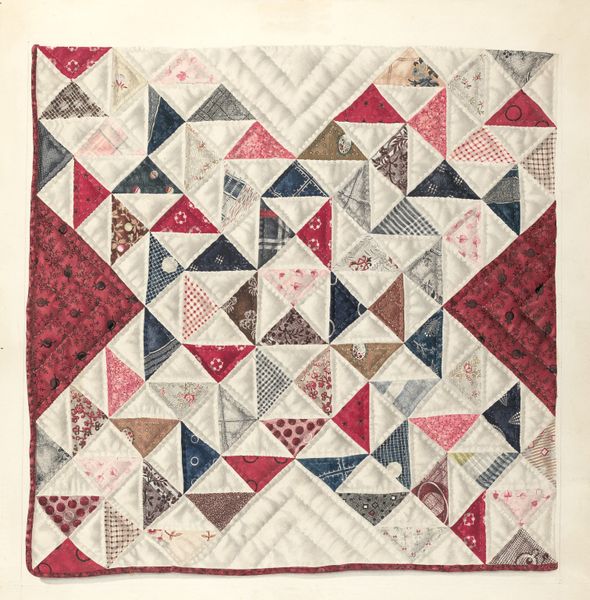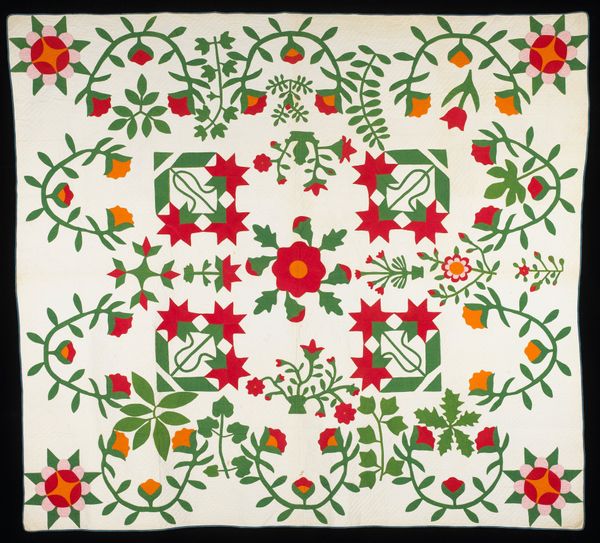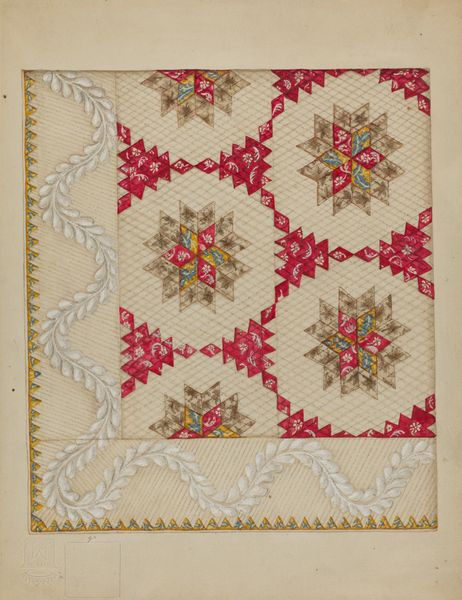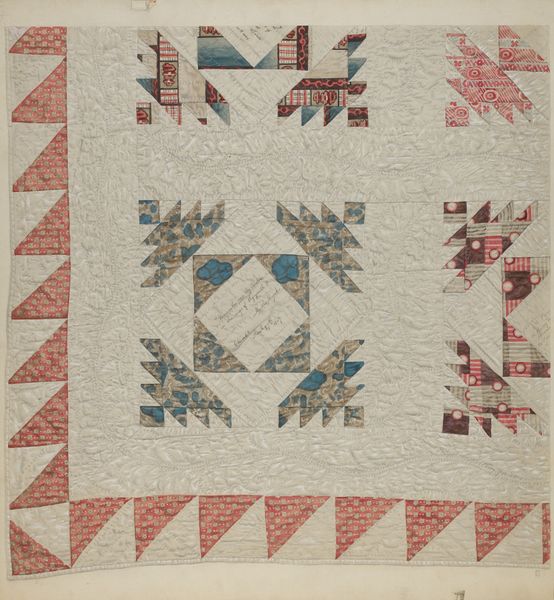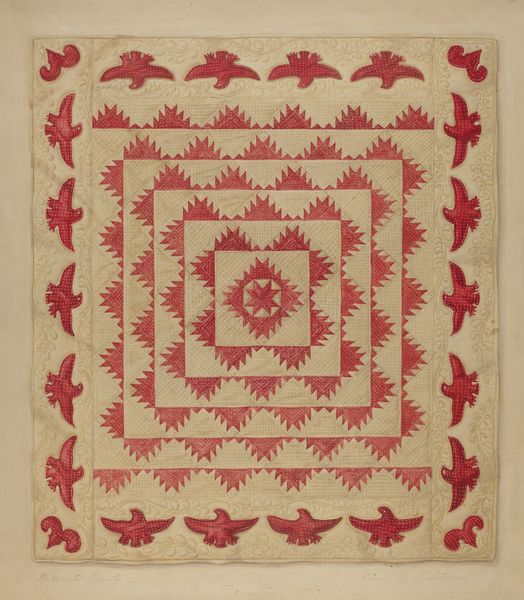
textile, cotton
#
textile
#
geometric pattern
#
organic pattern
#
cotton
#
decorative-art
Dimensions: 107 x 105 1/2 in. (271.78 x 267.97 cm)
Copyright: Public Domain
Curator: Looking at this, it’s like a whispered memory of a gentler time. It's titled "Baltimore Signature Album Quilt Top", probably created between 1844 and 1845. The anonymous maker stitched together cotton into something so personal. Editor: It's so visually dense. My immediate thought is how restrained the color palette is and yet, paradoxically, it bursts with life and delicate detail! The floral patterns feel so intentional, each block a contained garden. Curator: These album quilts became popular expressions within communities, especially among women. Each square was often made by a different person, each containing signatures and dates. It's social history rendered in fabric! You can almost picture these women gathering, needle and thread in hand, sharing stories. Editor: Absolutely. Seeing this work at the Minneapolis Institute of Art, I start thinking about textiles entering a fine art space. It highlights the complexities inherent when objects shift between "craft" and "art." And with that many delicate floral designs, there must be some symbolism going on too. Curator: You're right; these motifs weren't simply decorative. Roses might symbolize love, lilies purity, and so forth. These women imbued the quilt with layers of meaning, creating a collective narrative. Think of it like a social media profile page but sewn onto cloth, quite beautiful. Editor: It's such a potent act of preservation, too. It’s almost as if the quilters, by signing their names into these delicate fabrics, hoped their presence, their lives, would resist historical disappearance. A collaborative rebellion of sorts. Curator: Definitely. What's particularly evocative for me is knowing that each stitch carries with it untold stories. This wasn't just an object for warmth; it was a testament to human connection, a community stitched together. Editor: Absolutely, seeing that reminds me that our spaces of safety and belonging are often co-created, interwoven.
Comments
minneapolisinstituteofart almost 2 years ago
⋮
Thirty-six women made this quilt top, each contributing a unique square, which she signed. Signature album quilts were a collective form of remembrance—a record of the names, kind sentiments, and sewing skills of a group of friends. Such quilts became popular in the 1840s, a period of national expansion when many people, moving westward, desired a material reminder of the communities they left behind. Album quilts were especially popular in Baltimore, where the Methodist Church had a strong presence. Methodist ministers had to move to a different congregation every year, and on their arrival or departure they often received an album quilt from the congregation. This quilt top was not completed with a backing, so it likely was never presented to the intended recipient.
Join the conversation
Join millions of artists and users on Artera today and experience the ultimate creative platform.
